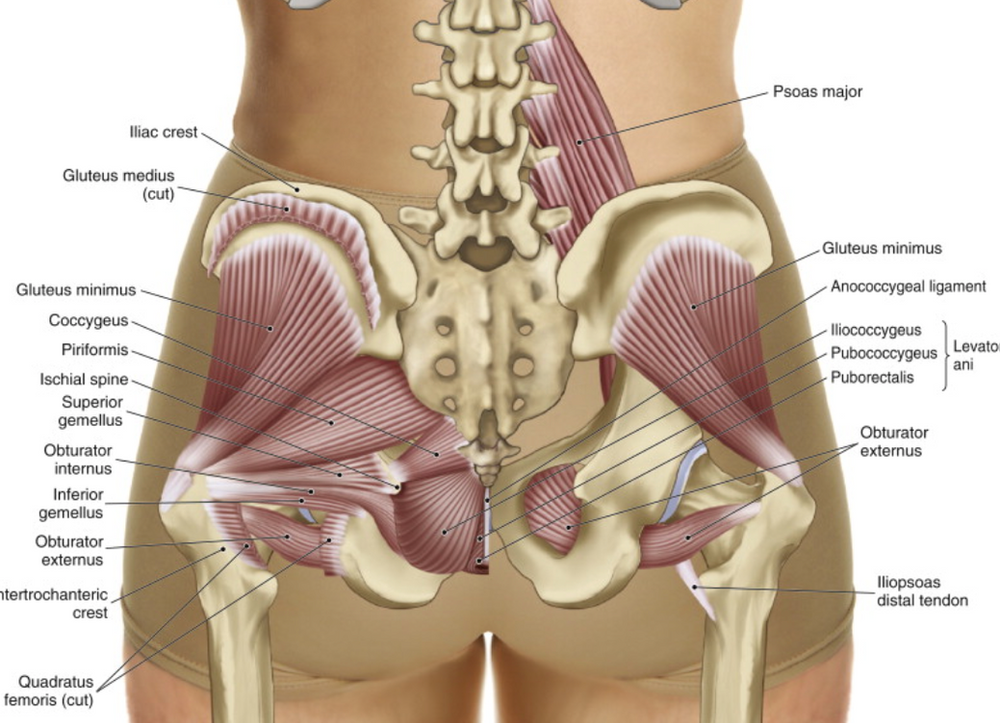How to strengthen pelvic muscles
Pelvic Floor Exercises for Everyone (Yes, Everyone)
You can strengthen and lengthen your pelvic floor muscles with exercises, including quick flick Kegels and heel slides. Treating underlying conditions and changing certain habits may also help.
If you can’t sneeze, laugh, or cough without leaking a little urine, you’re not alone. Problems with the pelvic floor are common and can happen to anyone (1).
The good news? Incorporating specific exercises (aka pelvic floor muscle training) into your overall fitness routine can help strengthen your pelvic floor muscles, as well as reduce the severity of symptoms of pelvic organ prolapse (2).
Here’s an easy-to-understand guide to what the pelvic floor is, what it does, how to find these muscles, and tips regarding when to see a professional. Plus, it provides five exercises to help strengthen your pelvic floor that you can start doing right away!
The pelvic floor comprises muscles and connective tissues. These soft tissues attach to your pelvis, and more specifically, to the bones at the bottom of the pelvis.
In all people, the pelvic organs include the urethra, bladder, intestines, and rectum. If you have a vagina, the pelvic floor also consists of the uterus, cervix, and vagina (3).
A good way to visualize the pelvic floor and its function, says Marcy Crouch, PT, DPT, WCS, a board certified clinical specialist in women’s health, is to picture these muscles at the bottom of the pelvis like a hammock or basket.
“When the pelvic floor is engaged or contracted, it performs a lifting motion toward your head, which feels like you are trying to stop gas or urine, or pucker your anal opening,” she says.
SummaryThe pelvic floor comprises muscles and connective tissues that attach to the pelvis.
The pelvic floor muscles are critical to daily functions. They support the pelvic organs, including the bladder, urethra, rectum, anus, prostate, uterus, cervix, vagina, and intestines (4).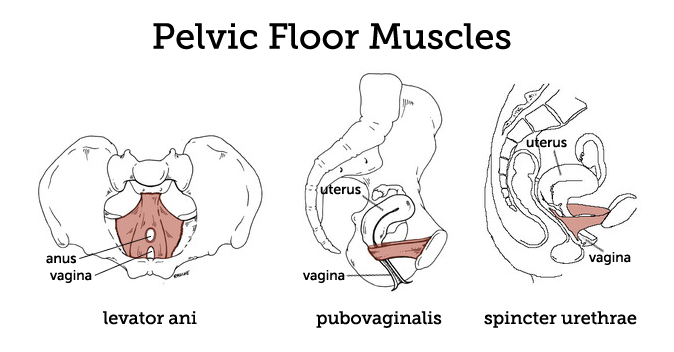
Pelvic floor muscles also contribute to sexual health and function, including arousal and orgasm (5, 6).
Plus, they help stabilize your hips and trunk, especially when walking and standing.
Pregnancy and vaginal birth can weaken these muscles, causing a host of issues, which range in severity from mild pain and discomfort to pelvic organ prolapse (7, 8).
But it’s not just pregnancy or childbirth that can cause pelvic floor dysfunction. It can also occur with age, menopause, surgery, repeated heavy lifting, prolonged sitting, sexual abuse, or conditions that create pressure on the abdomen, such as excessive weight.
Additionally, certain habits, symptoms, or conditions can contribute to pelvic floor disorders (PFD), such as endometriosis, irritable bowel syndrome, interstitial cystitis, and habitual patterns of avoiding or restricting bowel movements (4).
SummaryPelvic floor muscles support the urethra, bladder, intestines, rectum, and other pelvic organs.
If you have a uterus, cervix, and vagina, the pelvic floor also supports these organs.
For a lot of people, the concepts of Kegels and the pelvic floor are synonymous with a vagina, and more specifically, pregnancy.
But what you might not know is that people of all genders have these muscles. In people with a penis, the pelvic floor muscles support the bladder and bowel, preventing leakage of stool and urine (9).
They also help with sexual health, including function and sensation.
Common diagnoses of pelvic floor disorders in men include chronic prostatitis, pudendal neuralgia, genitofemoral neuralgia, and hypertonicity (10).
SummaryPeople of all genders have pelvic floor muscles.
One of the simplest ways to find the pelvic floor is to stop or slow urine flow while going to the bathroom. If you can do this successfully at least a few times, you’ve found your pelvic floor.
Another good way to activate the pelvic floor muscles, says Crouch, is this:
- Lie down with your knees bent and feet flat on the floor.
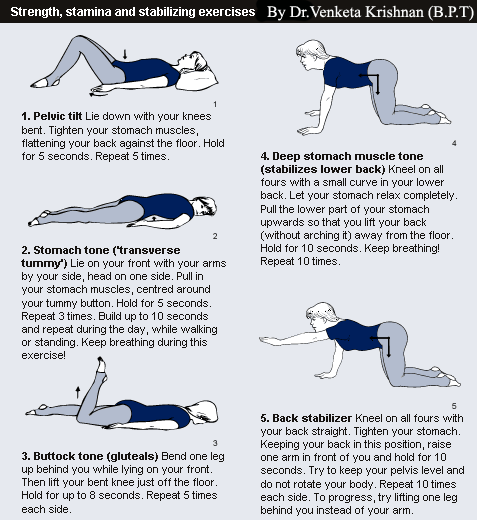 Inhale.
Inhale. - Exhale gently, draw in your lower abdominal muscles, and squeeze in the muscles around the urethra like you’re trying to stop gas or urine. People with a vagina can also focus on lifting or squeezing the muscles around the vagina.
- Hold for 1–2 seconds, then let everything go. You should feel the pelvic floor muscles release and drop.
One way to find the pelvic floor muscles while standing is to imagine you need to pass gas but don’t want to let it out.
If you’re trying to hold it in, there’s a good chance you’ll squeeze your rectum and anus. The muscles you activate are those comprising the pelvic floor, especially if you feel a pulling sensation at your anus.
When engaging the pelvic floor, it’s important to remember that these muscles span the distance across the bottom of your pelvis. So, if you’re contracting only the muscles that control the flow of urine but not the rectal muscles, you aren’t getting a full contraction.
For the most effective contraction, engage both areas — the muscles that would stop gas and urine simultaneously. Research has also shown that engaging the transversus abdominis and obliques at the same time may help deepen pelvic floor muscle engagement (11).
Research has also shown that engaging the transversus abdominis and obliques at the same time may help deepen pelvic floor muscle engagement (11).
Likewise, engaging the pelvic floor muscles may contribute to a stronger abdominal contraction (12).
This is especially important to remember when you’re an active individual or looking to increase your core strength for functional purposes.
Still, learning to release or relax the contraction of these muscles is just as important for optimal pelvic floor function. Once you’re able to feel the sensation of contraction in these muscles, check in with yourself occasionally: Are these muscles always turned on, even just a little?
One way to think about it is to imagine your pelvic floor muscles as an elevator. When you’re sitting at your desk or standing and doing dishes, take note of where the elevator has come to a stop. Is it at the bottom floor? At the third floor? Or all the way at the tenth?
Learning to let the elevator rest at the bottom is important, too, as excess tension in these muscles can cause pain.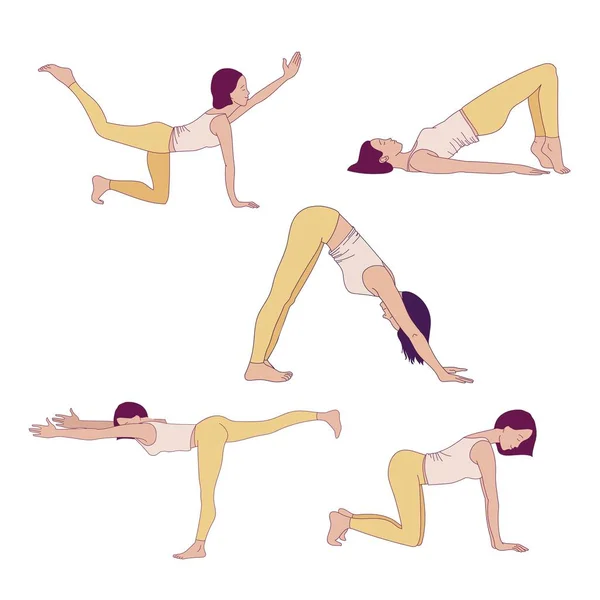
SummaryThere are several ways to find the pelvic floor muscles, including stopping urine midstream and trying to prevent gas from leaving your body. It’s important to learn how to both contract and relax these muscles.
When the pelvic floor muscles are weak or malfunctioning, they lose the ability to fully support the pelvic organs, causing pelvic floor disorders.
These disorders can include urinary or fecal incontinence, urgency urinary incontinence, overactive bladder, and pelvic organ prolapse, and they might cause symptoms like painful sex (13, 14).
It’s hard to estimate how many people have a pelvic floor disorder, as awareness of the symptoms and conditions remains low. Many people who identify as women assume pelvic floor dysfunction is a normal part of childbirth or aging and therefore don’t seek treatment.
However, it’s estimated that about 1 in 4 women experience pelvic floor disorders, and that number doubles by the time women are over 80 years old.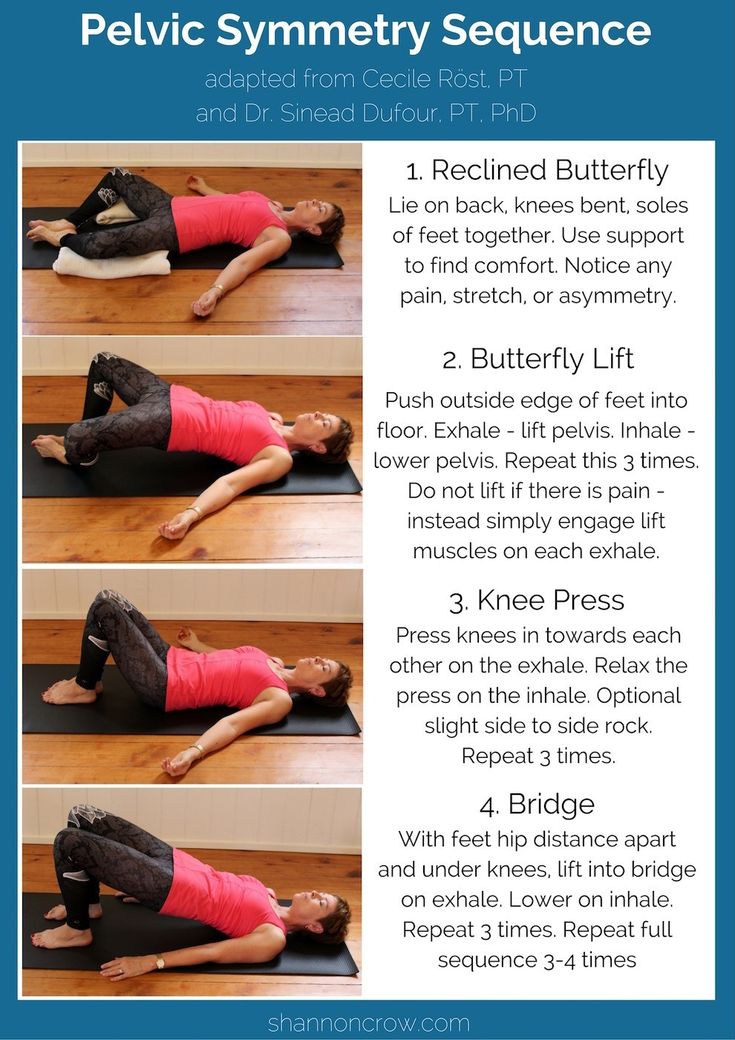 Some research shows that about 50% of women are affected by PFD in their childbearing years (4, 13).
Some research shows that about 50% of women are affected by PFD in their childbearing years (4, 13).
What’s more, researchers expect to see a 70% increase in the number of women impacted by PFD by the year 2050, due to health trends like increasing body mass index and chronic constipation (14).
Furthermore, people with a penis don’t often think they can be impacted by PFD, but the prevalence of such conditions in men is estimated to be about 16% (4).
Symptoms of pelvic floor dysfunction include:
- pelvic pressure or fullness
- the frequent urge to urinate or painful urination
- urinary leakage
- urinary incontinence
- lower back pain
- constipation, difficulties with bowel movements, or bowel leakage
- difficulty emptying the bladder
- pain with sexual intercourse
- pain in the pelvic region or genitals
- pelvic muscle spasms
Fortunately, there are nonsurgical ways to treat PFD and find relief from pain or embarrassment.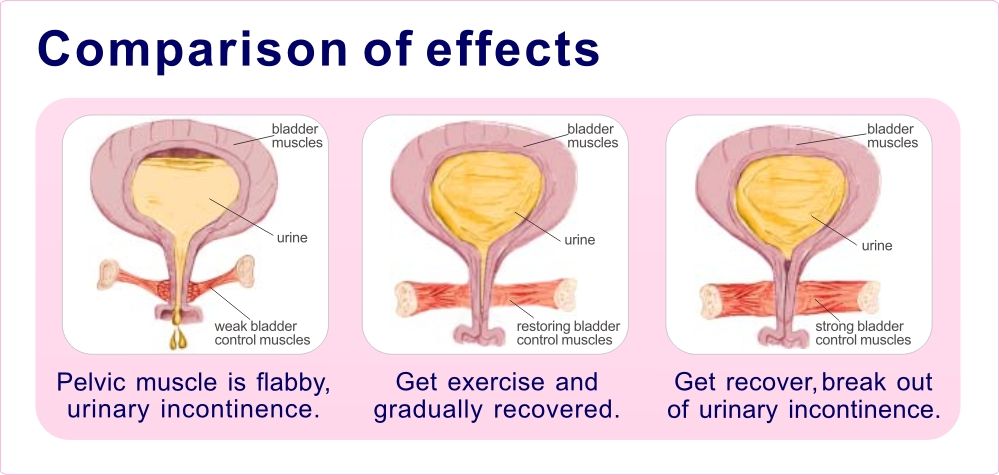 Often a consultation with a pelvic floor physical therapist is a good place to start.
Often a consultation with a pelvic floor physical therapist is a good place to start.
SummaryPelvic floor disorders (PFD) are more common than people realize, but they’re also more treatable than people realize.
Chronic issues with the pelvic floor can be caused by both hypotonic muscles (pelvic muscles that are too lax or weak) or hypertonic muscles (pelvic floor muscles that are too tight or overactive) (15, 16, 17).
Sometimes, these conditions are referred to as relaxing pelvic floor dysfunction and nonrelaxing pelvic floor dysfunction.
Pelvic floor dysfunction can also happen on a continuum, with both hypotonic and hypertonic issues. This often comes as a surprise to people who assume their pelvic floor issues are caused by inactive muscles.
But here’s the deal: Not everyone should be doing Kegels.
The pelvic floor comprises skeletal muscle. “That means it can have the same kind of injuries, weakness, or trauma like any other muscle in your body,” says Crouch. “It can also become “tight” or chronically contracted — think a muscle spasm in your calf.”
“It can also become “tight” or chronically contracted — think a muscle spasm in your calf.”
If the muscles are in spasm, contracted, or too tight, Crouch says doing Kegels can worsen the problem — pain, leaking, constipation, or sexual dysfunction. In other words, if your pelvic floor is hypertonic, it’s best to avoid Kegels until you consult a pelvic floor physical therapist.
SummaryPelvic floor muscles can be hypotonic (too weak or lax) or hypertonic (too tight).
Like other muscles in your body, the pelvic floor operates best when the muscles are strong and able to release fully after a full contraction. Strengthening the pelvic floor allows you to better support the bladder, bowels, and uterus (18).
Plus, it can help with bladder and bowel control.
Researchers have also found that improved pelvic floor function improves quality of life (19).
If you have pelvic floor prolapse, strengthening the pelvic floor muscles likewise helps reduce the severity of symptoms, including urinary leakage, incontinence, pelvic pressure, and lower back pain, among others (7).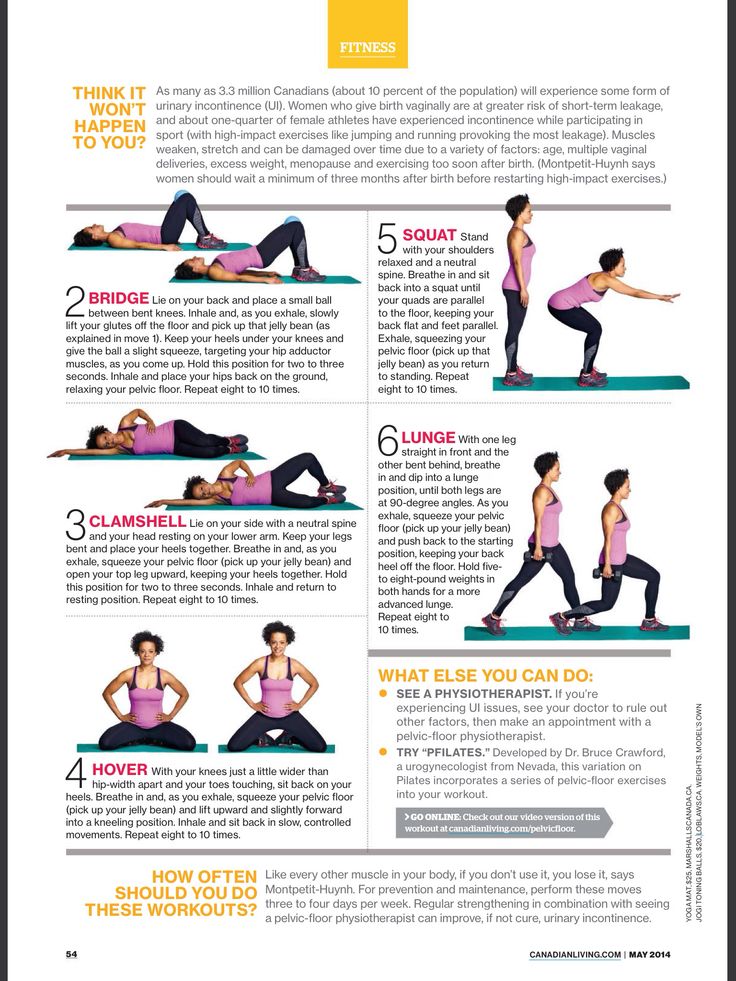
A pelvic floor strengthening program could likewise lead to better sex (5).
Some research supports the connection between male sexual function and pelvic floor function. Specifically, researchers cite how pelvic floor physical therapy can potentially improve erectile dysfunction and ejaculation problems (20).
Moreover, regularly squeezing or contracting the pelvic floor muscles may boost sexual sensation and sexual function for some people with a vagina (21).
Finally, the American Urological Association recommends pelvic floor muscle training as part of a treatment plan for overactive bladder (22).
The goal of this therapy is to inhibit involuntary bladder contractions and decrease incontinence.
SummaryStrengthening the pelvic floor muscles can reduce incontinence, improve sexual health, decrease symptoms of pelvic floor prolapse, and help treat overactive bladder.
You can activate the pelvic floor anytime, anywhere. But it’s also beneficial to incorporate specific exercises that strengthen and target the pelvic floor muscles.
But it’s also beneficial to incorporate specific exercises that strengthen and target the pelvic floor muscles.
One way to design a program is to categorize the exercises for those who have hypotonic pelvic floor muscles versus those who have hypertonic pelvic floor muscles.
According to Crouch, hypotonic means you have low tone pelvic floor issues and need to strengthen and improve endurance and power.
Exercises for hypotonic pelvic floor muscles
To target hypotonic pelvic floor issues, Crouch recommends these 3 exercises:
Quick flick Kegels
Crouch says the quick flick Kegel requires quick contractions of your pelvic floor to help activate the muscles faster and stronger to stop leaks upon sneezing or coughing.
- Begin by lying on the floor with your knees bent and feet flat on the floor. As this exercise becomes easier, try sitting or standing while performing it.
- Find your pelvic floor muscles using the tips described above.

- Exhale, pull your navel to your spine, and quickly contract and release your pelvic floor muscles. Aim to contract for 1 second before releasing.
- Maintain steady breathing throughout.
- Repeat the quick flick 10 times, then rest for 10 seconds. Do 2–3 sets.
Heel slides
Heel slides encourage pelvic floor contractions while targeting the deep abdominal muscles.
- Begin by lying on the floor with your knees bent and pelvis in a neutral position.
- Inhale into the rib cage, then exhale through the mouth, letting your ribs naturally compress.
- Draw your pelvic floor up, lock in your core, and slide your right heel away from you. Only go as far as you can without losing your connection to your deep core.
- Find the bottom position, then inhale and bring your leg back to starting position.
- Repeat.
- Do 10 slides on each side before changing to the other leg.
Marches (also called toe taps)
Like heel slides, the marching exercise increases core stability and encourages pelvic floor contractions.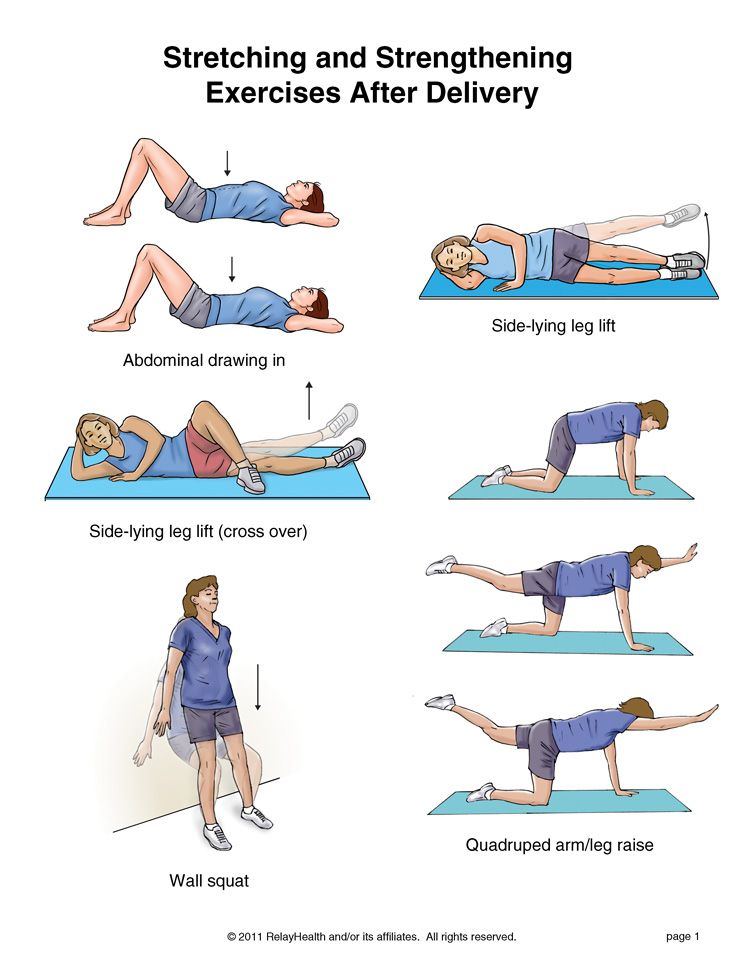
- Begin by lying on the floor with your knees bent and pelvis in a neutral position.
- Inhale into your rib cage, then exhale through your mouth, letting your ribs naturally compress.
- Draw your pelvic floor up and lock in your core.
- Slowly lift one leg up to a tabletop position.
- Slowly lower this leg to the starting position.
- Repeat the movement alternating legs. You should not feel any pain in your lower back. It’s important that your deep core stays engaged throughout the entire exercise.
- Alternate legs for 12–20 times total.
Exercises for hypertonic pelvic floor muscles
Hypertonic exercises may provide some relaxation and lengthening for someone who has a short or tight pelvic floor.
Crouch says the goal is to lengthen and release the hypertonic muscles, so contractions are more effective and the muscles can work effectively. “We have to make sure the muscle can do what we need it to do, so lengthening is just as important as strengthening,” she says.
Here are 2 exercises that she recommends:
Happy Baby Pose
The Happy Baby Pose is a great addition to a pelvic floor routine when stretching and releasing are the goal.
- Begin by lying on the floor with your knees bent.
- Bring your knees toward your belly at a 90-degree angle, with the soles of your feet facing up.
- Grab and hold the outside or inside of your feet.
- Open your knees until they’re slightly wider than your torso. Then, bring your feet up toward your armpits. Make sure your ankles are over your knees.
- Flex your heels and push your feet into your hands. You can stay in this position for several breaths or gently rock from side to side.
Diaphragmatic breathing
Diaphragmatic breathing encourages the functional relationship between the diaphragm and pelvic floor. It’s also an excellent exercise for reducing stress. (23)
- Begin by lying flat on the floor on a yoga or exercise mat. You can also perform the exercise in a seated position.
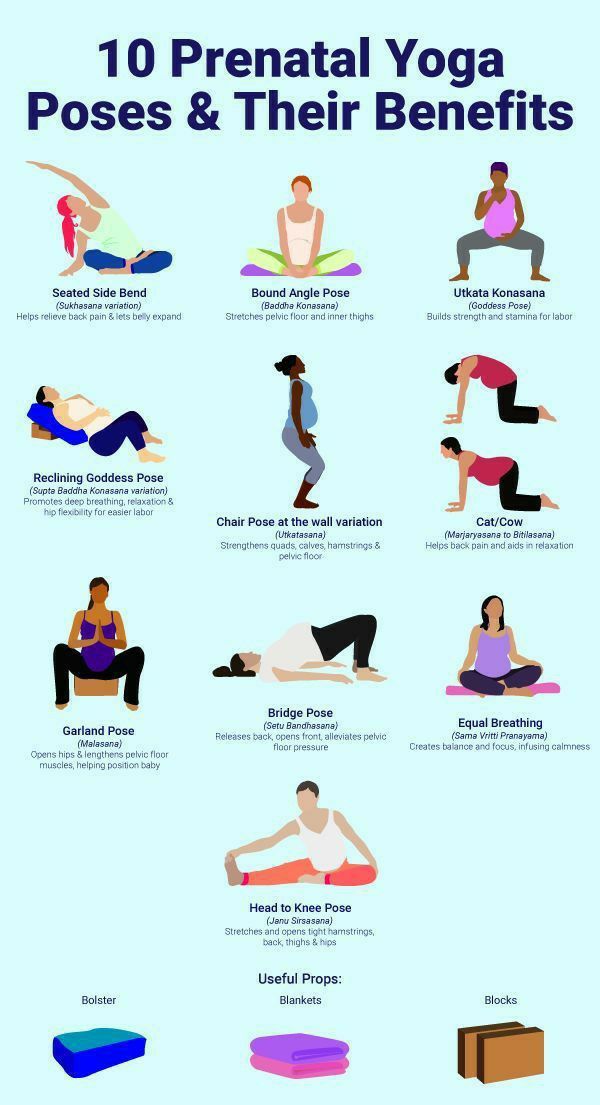
- Do a few seconds of progressive relaxation. Focus on releasing the tension in your body.
- Once relaxed, put one hand on your stomach and the other on your chest.
- Inhale through your nose to expand your stomach — your chest should stay relatively still. Then, breathe in for 2–3 seconds and exhale slowly.
- Repeat several times while keeping one hand on the chest and one on the stomach.
Crouch also recommends adding lunges and squats to a pelvic floor routine. “Everyday exercise like lunging and Swiss ball squats can be great ways to add in pelvic floor strengthening,” she says.
When performing these moves, Crouch says to think about contracting the pelvic floor before you go down into the lunge or squat, re-engaging at the bottom, and then contracting again as you drive up to standing.
SummaryQuick flick Kegels, marches, heel slides, Happy Baby Pose, and diaphragmatic breathing are five exercises that help relax and condition the pelvic floor muscles.
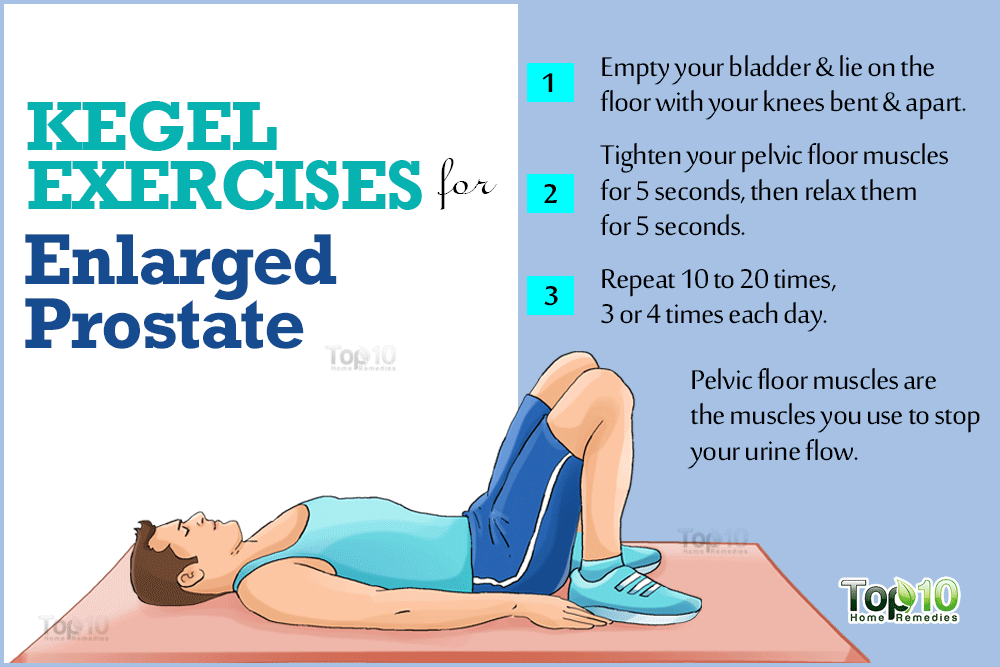
For a lot of people, adding pelvic floor exercises to their daily routine is a simple way to strengthen these muscles and maintain overall pelvic health.
But for many others, seeking help from a doctor or a physical therapist trained in pelvic floor issues is a necessary intervention. This is especially true if you’re having bowel or bladder control problems.
Here are some signs to watch for that may indicate it’s time to see a professional (24).
- leaking urine or stool
- problems with having a bowel movement
- pressure or discomfort in the pelvis
- seeing or feeling a bulge protruding out of the vagina or anus
- pain while urinating
- incontinence
- difficulty emptying the bladder or bowels completely
Remember, it’s always OK to call your doctor, even if you feel your symptoms are not that severe. Finding the right treatment for your situation can help you feel better and prevent any further damage to the pelvic floor area.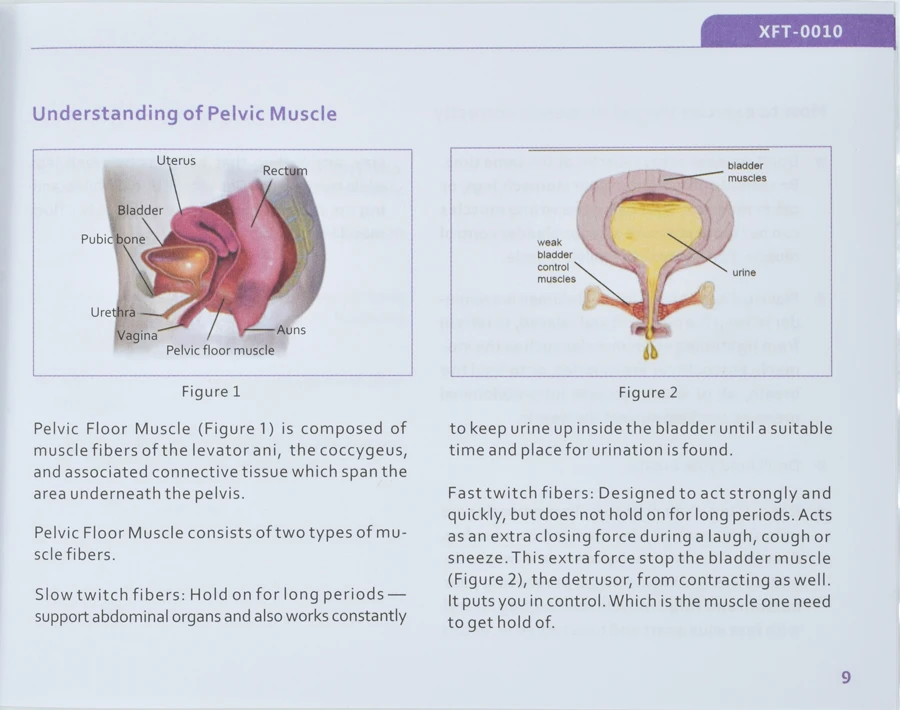
SummaryCall your doctor if you’re experiencing bladder control issues, pain or discomfort, or symptoms related to pelvic floor prolapse.
Adding pelvic floor strengthening exercises to your day is an excellent way to give these muscles a workout and boost your overall health. Remember to focus on form and function and engage the muscles each time you do an exercise.
If you’re new to these exercises or you would like some extra help, consider consulting a pelvic floor physical therapist. They can recommend exercises specific and ensure you’re doing them correctly.
Finally, if your symptoms interfere with daily activities or seem to be getting worse, make an appointment with your doctor.
We Try the Newest Kegel Trainer for Pelvic Floor Disorders
Your pelvic floor is a muscle
It may surprise you — or not, if you’ve ever been a victim of accidental pee leakage — that pelvic floor disorders are very common.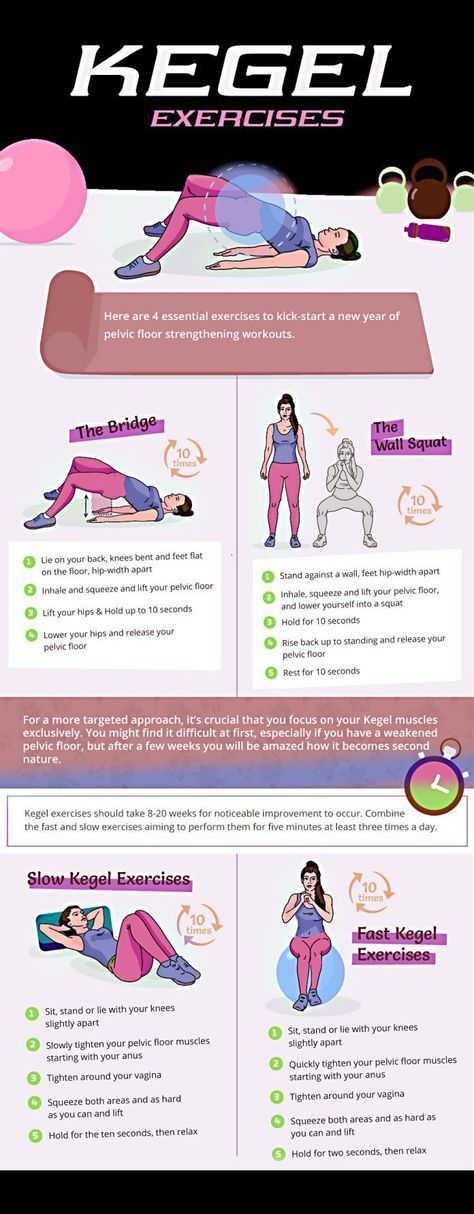 According to the National Institute of Health, they affect as many as 24 percent of U.S. women (and less commonly, men) as young as 20 years old. The symptoms are easily ignored and mistaken as an “it happens” situation, but treatment can be as simple and effective as a 10-minute workout.
According to the National Institute of Health, they affect as many as 24 percent of U.S. women (and less commonly, men) as young as 20 years old. The symptoms are easily ignored and mistaken as an “it happens” situation, but treatment can be as simple and effective as a 10-minute workout.
Exercising your pelvic floor is important, because like the muscles in the rest of your body, these need to be worked out consistently so that they thrive. Don’t save focusing on these muscles for those “crucial” moments, like when you need to hold your bladder during the last minutes of a Beyoncé concert.
They’re also the same muscles you use during intercourse (and when women ejaculate). So often, when women experience pain during sex or have trouble experiencing orgasm, the pelvic floor is to blame. Other symptoms that may occur are incontinence, back pain, constipation, and more.
We include products we think are useful for our readers. If you buy through links on this page, we may earn a small commission Here’s our process.
Healthline only shows you brands and products that we stand behind.
Our team thoroughly researches and evaluates the recommendations we make on our site. To establish that the product manufacturers addressed safety and efficacy standards, we:
- Evaluate ingredients and composition: Do they have the potential to cause harm?
- Fact-check all health claims: Do they align with the current body of scientific evidence?
- Assess the brand: Does it operate with integrity and adhere to industry best practices?
We do the research so you can find trusted products for your health and wellness.
Read more about our vetting process.Created by Tania Boler and Alexander Asseily — and used by fitness queen, Khloe Kardashian — Elvie is an insertable Kegels trainer that communicates with an app on your phone to guide you through the process of biofeedback.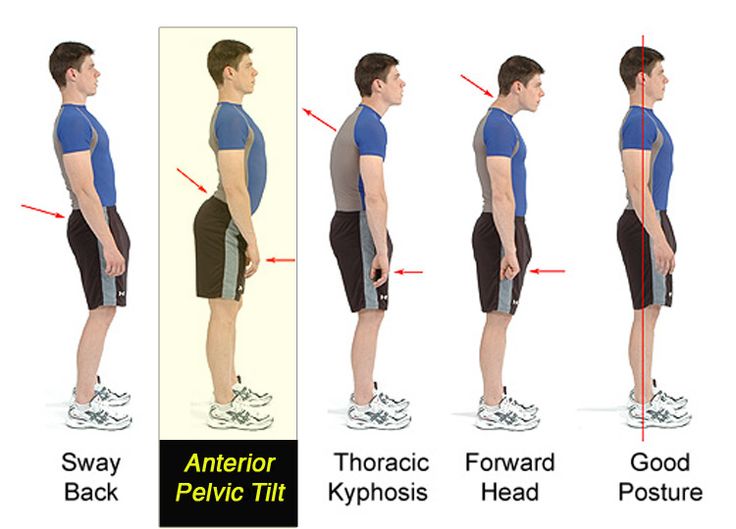 The best part? The real time feedback you get is all from the comfort of your own home.
The best part? The real time feedback you get is all from the comfort of your own home.
Boler decided to create this product after experiencing changes in her body after childbirth. Pelvic floor disorders can occur due to childbirth, traumatic injury, age, or simply genetics. “As I researched and talked to experts, I realized that there hasn’t been much innovation at all,” Boler explains.
“Giving women real-time biofeedback is shown to be the most reliable way to encourage commitment and improve outcomes of pelvic floor muscle training, but this technology existed almost exclusively in hospitals.”
Biofeedback is a type of physical therapy that works by helping you and your body gain more awareness of its functions. Kegel instructions can be readily found online, but most people find it nearly impossible to notice progress in real time — or even if they’re doing it correctly. That’s where toys like Elvie can help.
I’d heard of Kegel balls before (metal or silicone balls inserted into the vagina to give the muscles something to grab onto), but never a trainer that would give me instant feedback, so I was instantly intrigued and decided to give the trainer a whirl.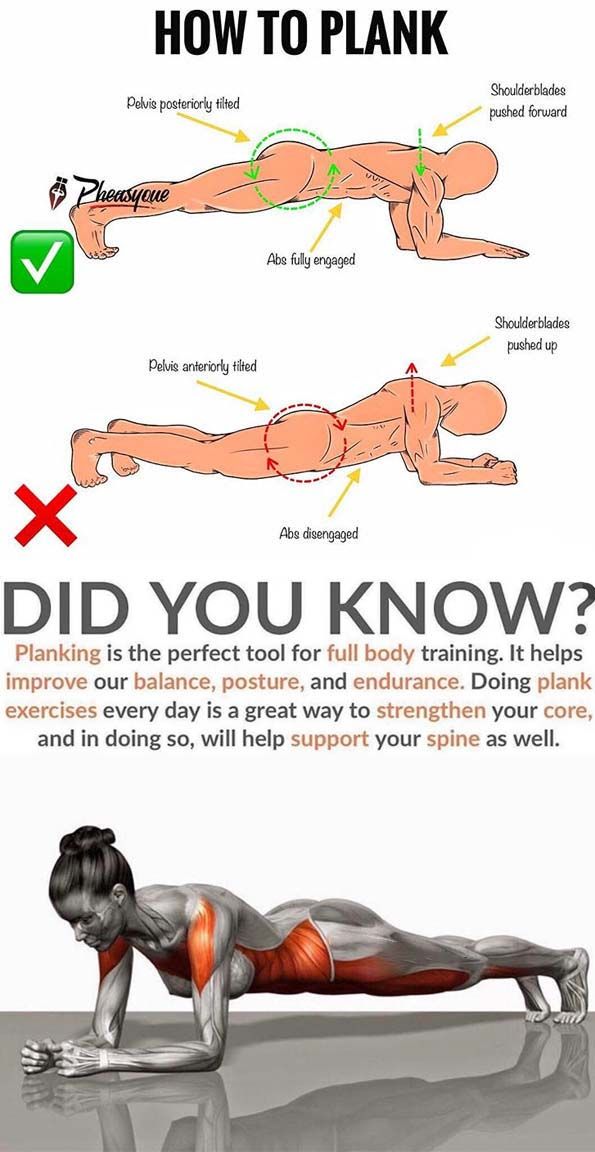
My first impression of the Elvie trainer was that the packaging was sleek and beautiful, and the charging case the trainer came in was equally gorgeous. The trainer is made of silicone and slips right in like a tampon with a little tail sticking out. It also looks similar to the award-winning We-Vibe vibrator that Khloe Kardashian endorses.
Share on Pinterest
It was very comfortable, and though I could definitely feel the trainer at all times, it never became painful. The app connects to the trainer using Bluetooth and then walks you through a series of exercises that essentially look like fun mobile games in which you try to hit targets and jump over lines using your Kegel muscles.
I found the instructions simple to follow and honestly quite fun! Having only ever tried Kegels without any kind of tool, it was really educational to watch what effect I was actually having when flexing my pelvic floor muscles. I loved that it gave me such instant feedback. The app also prompted me to try the movement with my hand before inserting the trainer so I could visualize what was happening inside.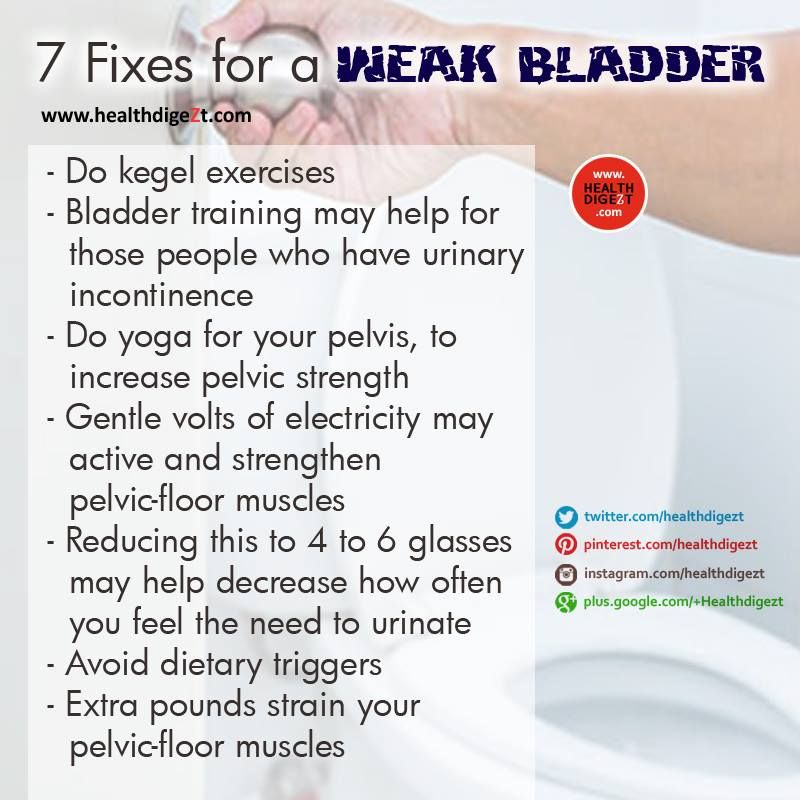
The trainer also gives you detailed tips on how to better your performance. For example, I was pushing down more than pulling up and it told me that pulling up would better strengthen my muscles to avoid future incontinence.
Elvie also tracks your progress over time and sets up a workout made just for you with four levels, from training to advanced. My personal workout plan includes three workouts a week with each one lasting roughly 10 minutes. This is perfect for those who don’t have time or energy to devote to long physical therapy sessions.
The Elvie trainer is absolutely fantastic, but can be a little pricey as it retails for $199. If you’re looking for a cheaper alternative, the A&E Intimate Pleasures Kegel Set contains four different-sized balls for Kegel workouts and retails on Amazon for $24.43.
If you specifically want the training aspect of Elvie, the app “myKegel” will walk you through a Kegels workout as well as remind you to work out and track your progress over time.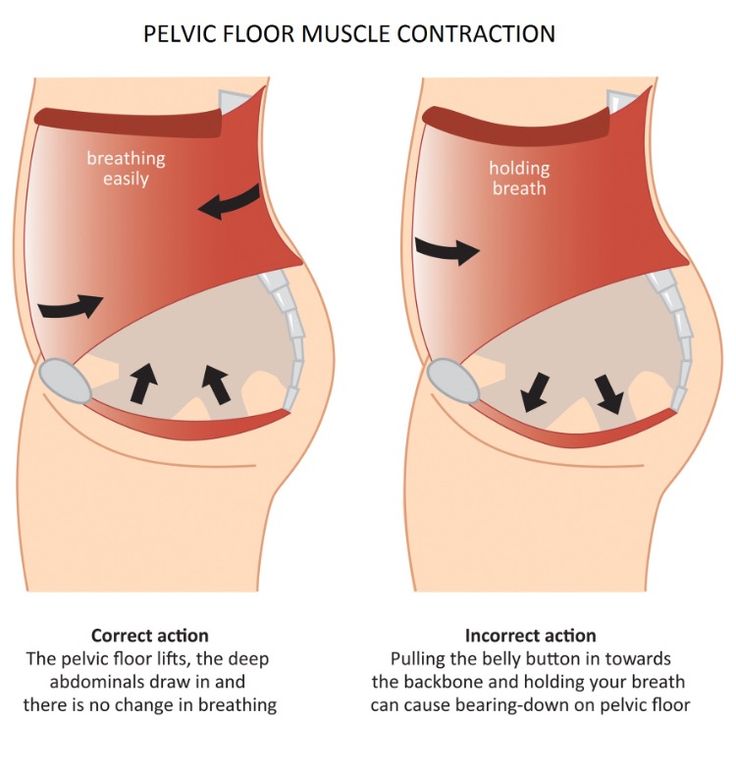 This app is only $3.99 and though it can’t tell you exactly how your muscles are responding, it’s a great, more affordable alternative to the Elvie trainer.
This app is only $3.99 and though it can’t tell you exactly how your muscles are responding, it’s a great, more affordable alternative to the Elvie trainer.
Even if you don’t have a pelvic floor disorder, you can certainly benefit from Kegel exercises. Strengthening these essential muscles can not only help you avoid incontinence and bowel issues, but can also lead to more fulfilling and deeper orgasms and reduce pain during sex.
So set your daily alarm, grab a workout trainer, and get training!
Share on Pinterest
Hannah Rimm is a writer, photographer, and generally creative person in New York City. She writes primarily about mental and sexual health and her writing and photography has appeared in Allure, HelloFlo, and Autostraddle. You can find her work at HannahRimm.com or follow her on Instagram.
Pelvic floor exercises (Kegel exercises) for men
Share Time to read: Approximately 2 min.
This information will help you learn how to do pelvic floor exercises (Kegel exercises).
back to top of pageAbout Kegel Exercises
The main purpose of Kegel exercises is to help you strengthen your pelvic floor muscles. These muscles support your bladder and intestines.
Kegel exercises will help you:
- Control or prevent urinary incontinence. Incontinence is the leakage of urine and stool (feces) that you cannot control.
- improve your sexual health.
About the pelvic floor muscles
The pelvic floor muscles line the pelvic cavity and support the pelvic organs (see Figure 1). These are the muscles that relax during urination (when you go to the toilet in a small way) and during passing gases or bowel movements (when you go to the toilet in a big way). You also use these muscles to hold urine and prevent leakage.
Figure 1 Pelvic floor muscles
Pelvic Floor Muscle Test
Pelvic floor muscles must be checked before performing Kegel exercises.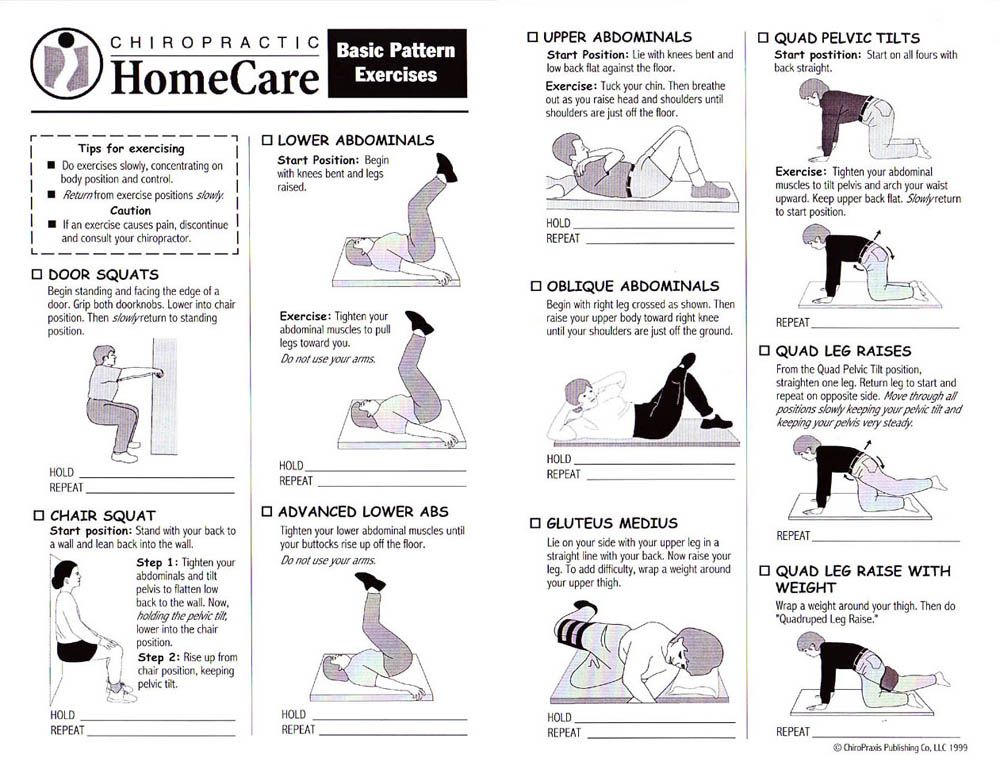 Think about what muscles you use to interrupt the stream of urine when urinating, concentrate on them. Don't do this often, as stopping the flow of urine every time you urinate can be harmful.
Think about what muscles you use to interrupt the stream of urine when urinating, concentrate on them. Don't do this often, as stopping the flow of urine every time you urinate can be harmful.
How to Do Kegel Exercises
Make sure you urinate to keep your bladder empty before doing Kegel exercises.
When you're ready, start doing the following:
- To begin, pull in your pelvic floor muscles and hold them there for 5 seconds. To do this, imagine that you are pulling in and lifting the genitals.
- Don't hold your breath. Counting out loud will keep you from holding your breath.
- After 5 seconds, slowly and completely relax the muscles, holding them in this state for 5 seconds.
- Repeat the exercise 10 times and do it at least 3 times daily.
Your pelvic floor muscles may become tired during this exercise. In this case, stop doing the exercise and start it later.
This exercise does not involve the abdominal muscles, legs or buttocks.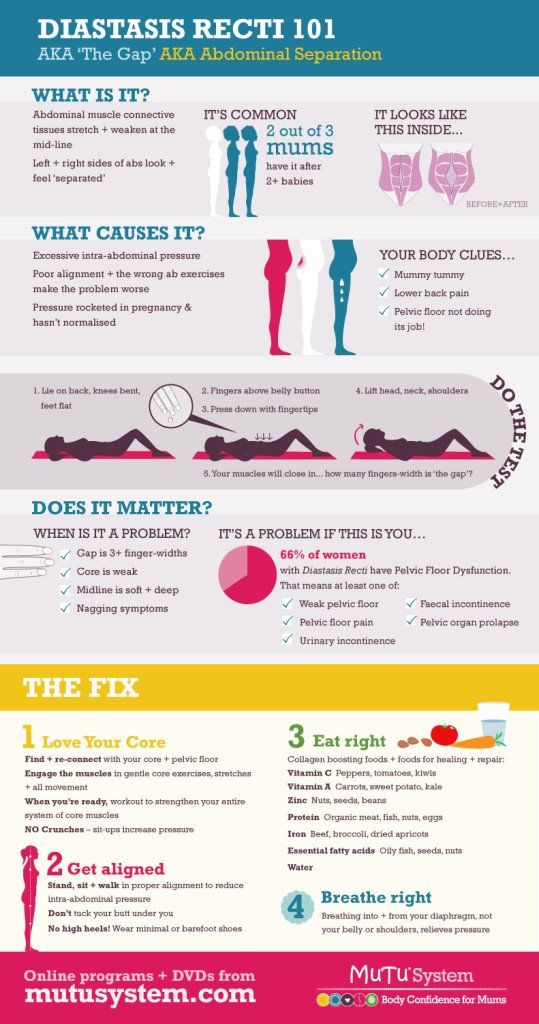 Exercising these muscles will not help you regain urinary control or improve your sexual health.
Exercising these muscles will not help you regain urinary control or improve your sexual health.
As you continue with these exercises, gradually increase the amount of time the pelvic floor muscles are contracted and relaxed. Start with 5 seconds and gradually build up the time each week until you reach 10 seconds.
back to top of pageWhen to do Kegel exercises
Most people prefer to do Kegel exercises while lying in bed or sitting in a chair. They can be done in any position convenient for you. Doing Kegel exercises while standing can be very helpful, as urine leakage usually occurs in this position.
To prevent leakage of urine, try a Kegel exercise before:
- get up;
- walk;
- go to the toilet;
- sneeze or cough;
- laugh.
Doing these exercises will help you strengthen your pelvic floor muscles and reduce urine leakage.
Do not do Kegel exercises if you have a Foley catheter (thin, flexible tube) in place.
Pain and Kegel exercises
Kegel exercises should not cause pain. Many find them simple and relaxing. But if you use the wrong muscles when doing them, you may experience discomfort.
- If you have back or stomach pain after doing Kegel exercises, you may be using your abdominal or back muscles instead of your pelvic floor muscles.
- If you have a headache after doing Kegel exercises, you may be tightening your chest muscles and holding your breath.
When should you contact your healthcare provider?
Call your healthcare provider if:
- concerns about bowel, bladder, or sexual function;
- difficulty concentrating on the pelvic floor muscles;
- pain when doing Kegel exercises;
- difficulty doing Kegel exercises;
- pain in the pelvic area;
- questions requiring referral to a pelvic physiotherapist.
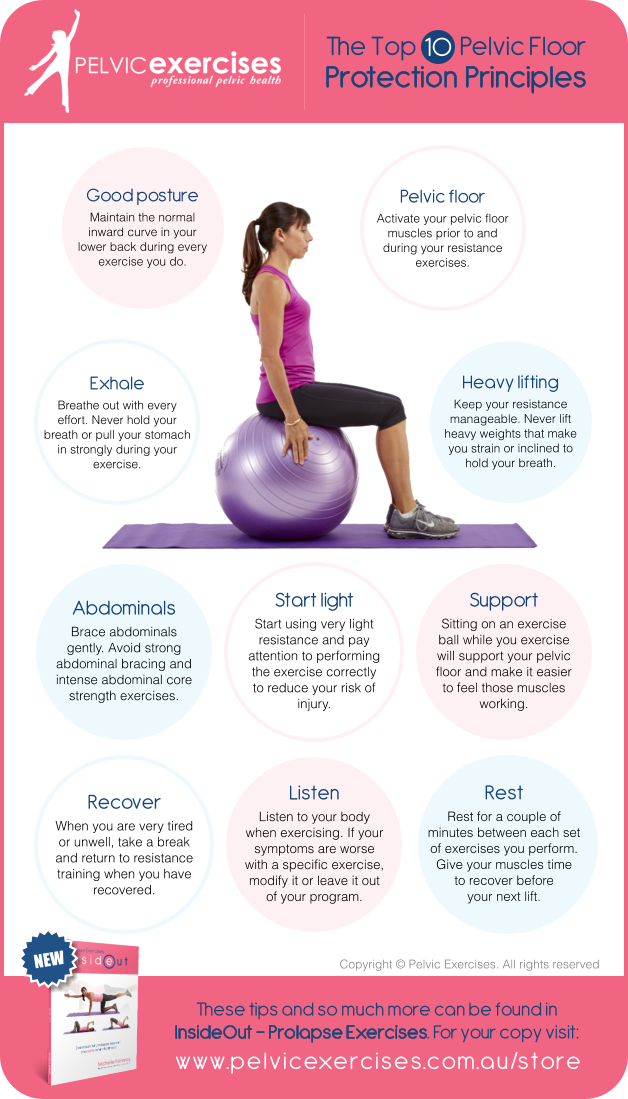
You must have JavaScript enabled to use this form.
Share your opinion
Give us your feedback
Your feedback will help us improve the information we provide to patients and caregivers.
Questions
| Questions | Yes | To some extent | No |
|---|---|---|---|
| Was this information easy for you to understand? | Yes | To some extent | No |
What should be explained in more detail?
Date last updated
Wednesday, June 15, 2022
Pelvic Floor Exercises (Kegel) for Women
This information will help you learn what pelvic floor exercises (Kegel) are and how to do them.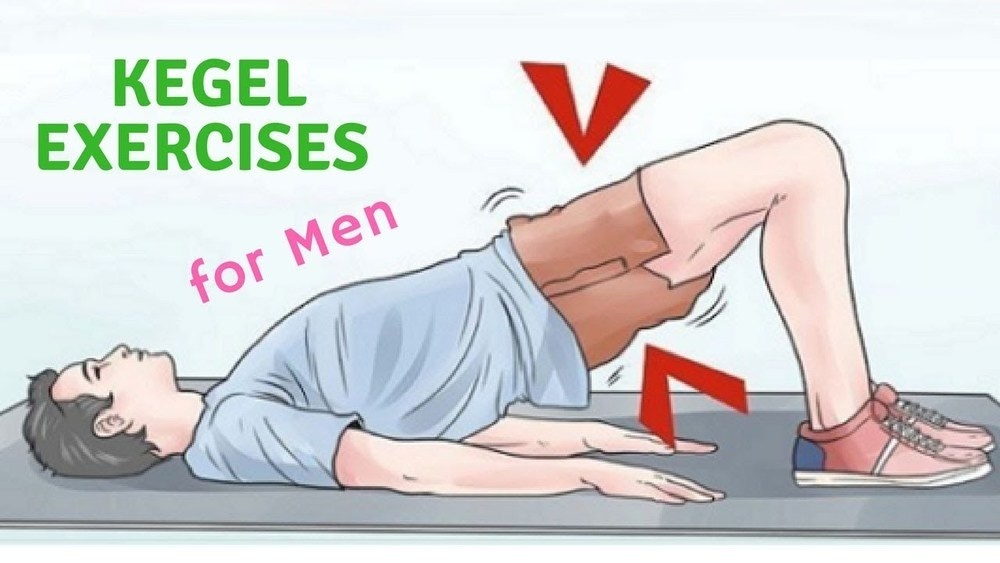
About Kegel Exercises
The main purpose of Kegel exercises is to help you strengthen your pelvic floor muscles. These muscles support your uterus, bladder, and intestines (see Figure 1). They are also called pelvic organs.
Figure 1. Pelvic floor muscles and pelvic organs
How Kegel exercises can help you
Kegel exercises can help you:
- Control or prevent urinary incontinence. Incontinence is the leakage of urine or feces that you cannot control.
- Support the pelvic organs. This will help reduce incontinence and soreness.
- Improve pelvic floor muscle coordination. Exercise helps make muscles stronger and more flexible. This is important if you experience pain or discomfort during intercourse or during a pelvic exam.
Kegel exercises can also be beneficial for sexual health and sexual satisfaction because they:
- improve blood circulation in the vagina and pelvic floor muscles,
- facilitate the achievement of orgasm;
- increase the production of vaginal lubrication (moisturizing the vagina).

How to Identify Your Pelvic Floor Muscles
When doing Kegel exercises, it is important to identify your pelvic floor muscles to make sure you are working with the correct muscles.
To determine the pelvic floor muscles, do the following:
- imagine you are urinating. Tighten the muscles that you use to interrupt the flow of urine while urinating. These are the pelvic floor muscles.
- Do not stop the stream of urine while urinating. This may lead to incomplete emptying of the bladder and also increases the risk of urinary tract infection (UTI).
- Tighten the muscles you use to hold back a bowel movement or gas.
- Insert the tip of a clean finger into the vagina. Tighten your pelvic floor muscles around your finger. You should feel the muscles in your vagina tense up and your pelvic floor move up.
How to Tell if You're Using the Wrong Muscles
Contracting your pelvic floor muscles doesn't involve your stomach, legs, or buttocks.
- To find out if the muscles in your legs or buttocks are also contracting, you can place one hand under your buttocks or on the inside of your upper leg. Tighten your pelvic floor muscles. If you feel movement in your leg or buttocks, then you are using the wrong muscles.
- If you are sitting in a chair, then when doing Kegel exercises, your body should not rise from the chair. If you feel that your body is lifting, then you are using the muscles of the buttocks.
How to do Kegel exercises
Get into a comfortable position before starting
Get into a comfortable position before starting Kegel exercises so that your body is relaxed. Most people prefer to do Kegel exercises while lying in bed or sitting in a chair. They can be done in any position convenient for you.
Once you are familiar with the exercises, you can do them in any position and anywhere, such as standing somewhere and waiting in line, which can help you do them more often.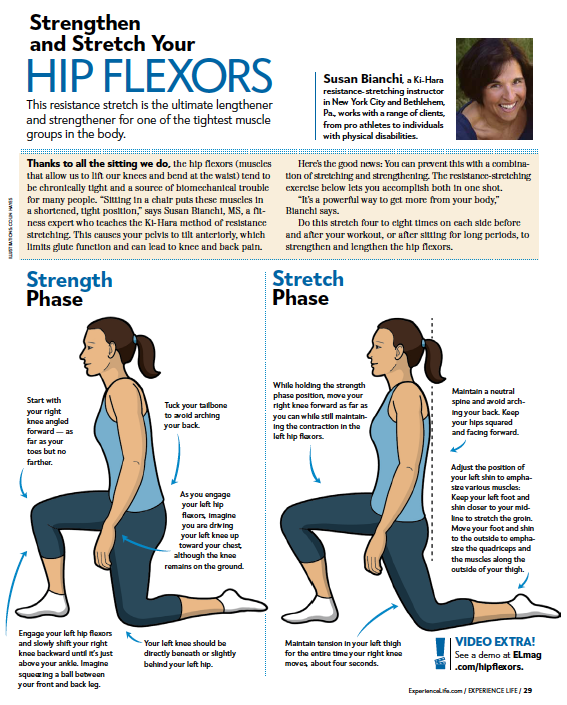
Kegel steps
- Inhale deeply through your nose to contract your abdominal muscles and fill with air. During inhalation, the pelvic floor muscles should be relaxed.
- Exhale slowly through pursed lips, as if you were blowing through a straw. Do this by slightly tensing your pelvic floor muscles.
- The pelvic floor muscles should be in a tense state for 3-6 seconds during exhalation. This is called a cut.
- Inhale again and stop muscle contraction. This will allow the muscles to relax.
- Relax your pelvic floor muscles completely for 6-10 seconds. It is very important to completely relax the muscles between each contraction.
and do not hold your breath while doing Kegel exercises. If you feel like you are holding your breath, count out loud while doing Kegel exercises.
How often to do Kegel exercises
Do this exercise for 10 repetitions per session. For best results, do 2-3 sessions of Kegel exercises daily.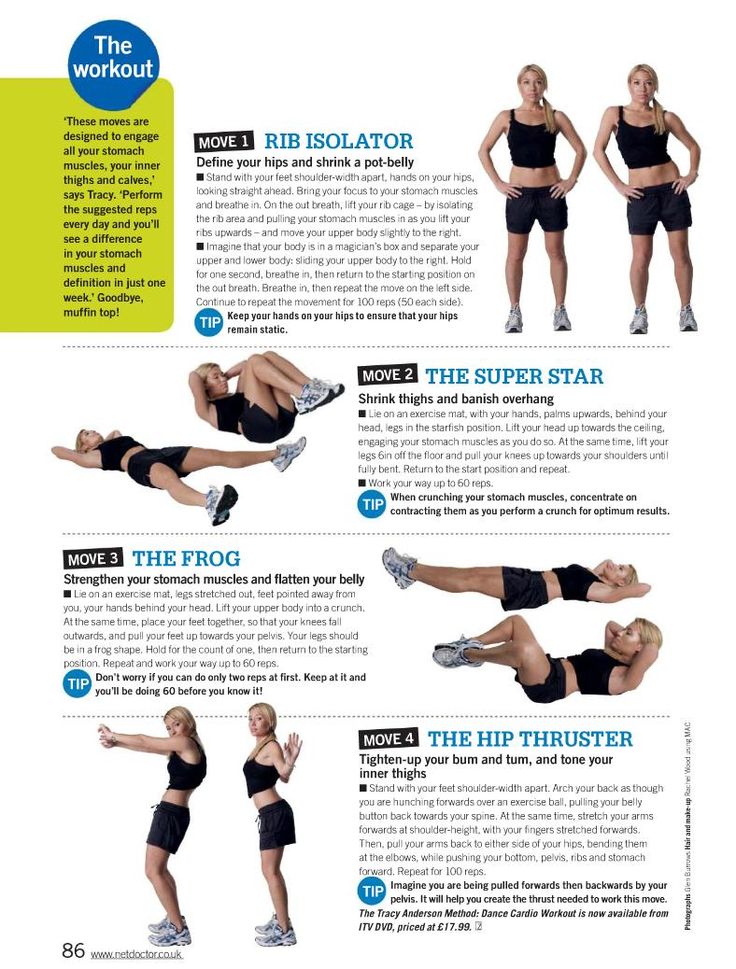 Sessions are best done at regular intervals throughout the day.
Sessions are best done at regular intervals throughout the day.
When to increase the duration of Kegel exercises
You can increase the duration of Kegel exercises if:
- pelvic floor muscles do not get tired after their contraction for 3-6 seconds;
- pelvic floor muscles do not get tired after doing 10 Kegel exercises in a row.
In this case, try contracting the muscles for 6-10 seconds. Then completely relax the muscles for 10 seconds. Be sure to keep breathing as the muscles contract.
Try to achieve the goal of holding a strong contraction for 10 seconds 10 times in a row.
What to do if you experience pain after Kegel exercises
Kegel exercises should not hurt. If you experience pain during or after Kegel exercises, stop exercising immediately and call your health care provider. You may not be doing the exercises correctly or they are not suitable for you.
back to top of pageGetting Sexual Health and Intimacy Information at MSK
If you need more information about sexual health and intimate life, talk to your health care provider. You can also enroll in the MSK's Female Sexual Medicine and Women's Health Program. For more information or to make an appointment, call 646-888-5076.
You can also enroll in the MSK's Female Sexual Medicine and Women's Health Program. For more information or to make an appointment, call 646-888-5076.
Services offered under the Women's Sexual Medicine and Health Program are available at the following centers:
|
|
When should you contact your healthcare provider?
Call your healthcare provider if:
- concerns about bowel, bladder, or sexual function;
- difficulty concentrating on the pelvic floor muscles;
- pain when doing Kegel exercises;
- difficulty doing Kegel exercises;
- pain in the pelvic area;
- questions requiring referral to a physical therapist who specializes in pelvic health.
